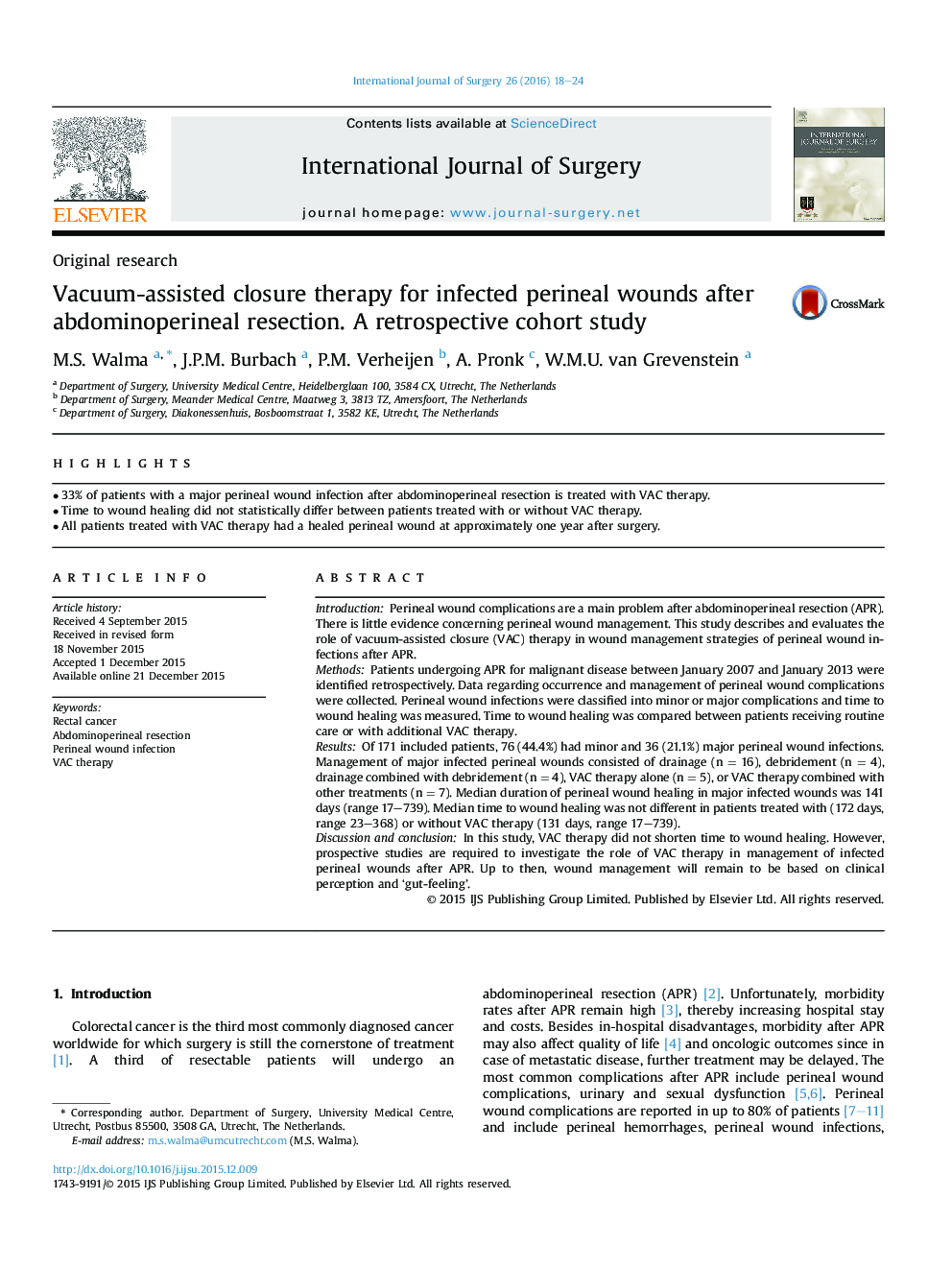| کد مقاله | کد نشریه | سال انتشار | مقاله انگلیسی | نسخه تمام متن |
|---|---|---|---|---|
| 4285561 | 1611962 | 2016 | 7 صفحه PDF | دانلود رایگان |
• 33% of patients with a major perineal wound infection after abdominoperineal resection is treated with VAC therapy.
• Time to wound healing did not statistically differ between patients treated with or without VAC therapy.
• All patients treated with VAC therapy had a healed perineal wound at approximately one year after surgery.
IntroductionPerineal wound complications are a main problem after abdominoperineal resection (APR). There is little evidence concerning perineal wound management. This study describes and evaluates the role of vacuum-assisted closure (VAC) therapy in wound management strategies of perineal wound infections after APR.MethodsPatients undergoing APR for malignant disease between January 2007 and January 2013 were identified retrospectively. Data regarding occurrence and management of perineal wound complications were collected. Perineal wound infections were classified into minor or major complications and time to wound healing was measured. Time to wound healing was compared between patients receiving routine care or with additional VAC therapy.ResultsOf 171 included patients, 76 (44.4%) had minor and 36 (21.1%) major perineal wound infections. Management of major infected perineal wounds consisted of drainage (n = 16), debridement (n = 4), drainage combined with debridement (n = 4), VAC therapy alone (n = 5), or VAC therapy combined with other treatments (n = 7). Median duration of perineal wound healing in major infected wounds was 141 days (range 17–739). Median time to wound healing was not different in patients treated with (172 days, range 23–368) or without VAC therapy (131 days, range 17–739).Discussion and conclusionIn this study, VAC therapy did not shorten time to wound healing. However, prospective studies are required to investigate the role of VAC therapy in management of infected perineal wounds after APR. Up to then, wound management will remain to be based on clinical perception and ‘gut-feeling’.
Journal: International Journal of Surgery - Volume 26, February 2016, Pages 18–24
